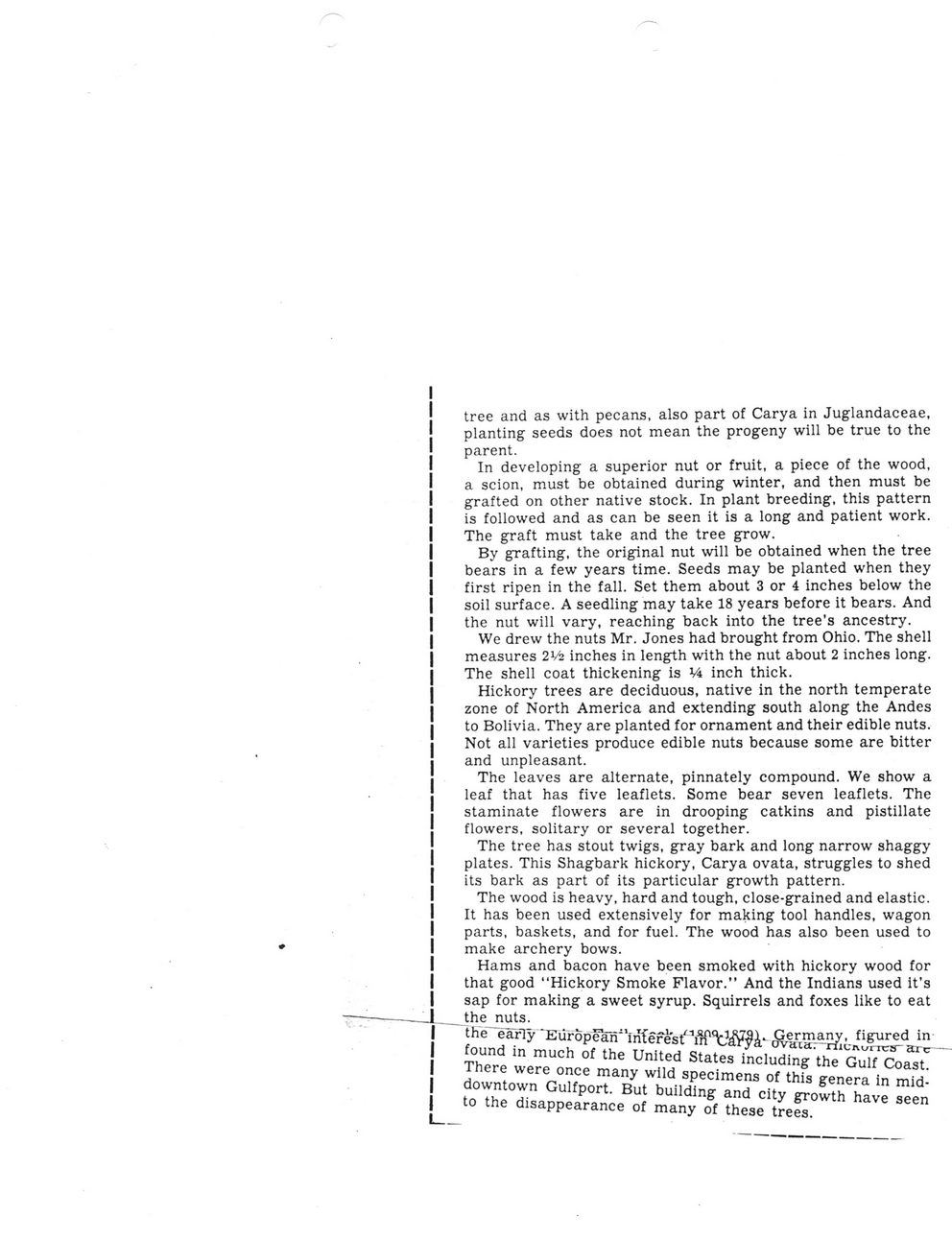This text was obtained via automated optical character recognition.
It has not been edited and may therefore contain several errors.
tree and as with pecans, also part of Carya in Juglandaceae, planting seeds does not mean the progeny will be true to the parent. In developing a superior nut or fruit, a piece of the wood, a scion, must be obtained during winter, and then must be grafted on other native stock. In plant breeding, this pattern is followed and as can be seen it is a long and patient work. The graft must take and the tree grow. By grafting, the original nut will be obtained when the tree bears in a few years time. Seeds may be planted when they first ripen in the fall. Set them about 3 or 4 inches below the soil surface. A seedling may take 18 years before it bears. And the nut will vary, reaching back into the tree?s ancestry. We drew the nuts Mr. Jones had brought from Ohio. The shell measures 2V2 inches in length with the nut about 2 inches long. The shell coat thickening is Vi inch thick. Hickory trees are deciduous, native in the north temperate zone of North America and extending south along the Andes to Bolivia. They are planted for ornament and their edible nuts. Not all varieties produce edible nuts because some are bitter and unpleasant. The leaves are alternate, pinnately compound. We show a leaf that has five leaflets. Some bear seven leaflets. The staminate flowers are in drooping catkins and pistillate flowers, solitary or several together. The tree has stout twigs, gray bark and long narrow shaggy plates. This Shagbark hickory, Carya ovata, struggles to shed its bark as part of its particular growth pattern. The wood is heavy, hard and tough, close-grained and elastic. It has been used extensively for making tool handles, wagon parts, baskets, and for fuel. The wood has also been used to make archery bows. Hams and bacon have been smoked with hickory wood for that good ??Hickory Smoke Flavor.? And the Indians used it?s sap for making a sweet syrup. Squirrels and foxes like to eat the nuts. to the disappearance of many of these trees.

Bartram Gardening-Along-the-Coast-article-page-2